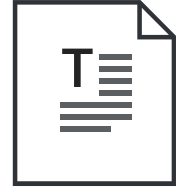The first thing that hits you about Cairo is the traffic. Countless cars, buses and all manner of two wheeled vehicles jostle for space in the 40o C heat while sounding their horns relentlessly. During my visit last year, my taxi took over two hours to edge its way 13 miles from the airport to my hotel in the downtown area. Gazing out of the taxi’s window as it inched its way along El-Orouba road, it was all too apparent why Cairo was the location of the first major metro construction on the African continent.
For Liberty Specialty Markets’ Global Financial Risks team, our involvement in this massive and complex infrastructure project began in 2015, when we bound our first political risk insurance. At this time, work on the Cairo Metro had been under way for 24 years, beginning in 1981 when the French government granted Egypt the funds necessary to begin construction of its first two lines. Our involvement is with the system’s third and fourth lines, construction of which runs until the early 2020s.
Widespread support
Cairo is a challenging city in which to write trade credit and political risk insurance. The region is seen by some as being susceptible to political instability, social unrest and terrorism. At the time of writing, the UK government warns its citizens that terrorist attacks in Egypt are ‘very likely’. The country is also facing what many see as a currency crisis, having devalued the Egyptian pound by 48% in 2016 and allowing it to float in order to receive a £9.6bn loan from the IMF. Yet even during the country’s 2011 revolution, work on the project continued and our policyholders – large French exporters – were able to maintain good relations with the Egyptian authorities.
Much of the reason for this is the widespread support for the aims and ambitions of the project. That groundswell of goodwill makes it highly attractive in underwriting terms. Egyptians see it as a priority for the entire country, not just Cairo’s 22m inhabitants, as the need to relieve traffic congestion in the city centre is pressing. It’s a need that grows more compelling when you consider that Cairo’s population is predicted to grow by 2.4% p.a each year, double the average rate of developing countries. The other big win is to make many of Cairo’s tourist attractions located far from its centre easily accessible – without resorting to four wheels.
This amount of support for the project, at all levels, has also made it highly appealing to major multinationals and development organisations such as the World Bank, the European Development Bank, Japan International Cooperation Agency and Agence Française de Development. The global political risk insurance market has supported it for many years without a single claim being made. This clearly makes it attractive – but as the adverts say, past performance is no guarantee of future returns.
Underwriting process
The underwriting process for a risk as large and complex as a major transport infrastructure project in Africa usually starts around 1–2 years before a contract is signed. Initially, our client will be in the throes of preparing to tender for the work. The price of insurance will be an important factor in the overall cost, hence these early discussions to gain an initial quotation and integrate the cost of cover into their margins. Some clients will fall at this hurdle, their tender rejected; others will progress further and then feed more data back to us. When, some months later, they receive confirmation that their tender has been accepted, we will set up the implementation of the policy so that its start date coincides with the contract coming into force.
In the case of the Cairo Metro, we were generally able to move more quickly – often progressing from quotation to inception in six months. This was because many of the clients were well-known to us and, in several instances, we already had other policies in place for them.
Cairo Metro facts
- By 2020, Cairo Metro is expected to carry 5m passengers a day.
- The idea of Cairo Metro was first proposed in the 1930s.
- A one-way ticket costs two Egyptian pounds.
- Trains run from 5.15am to 12.30am.
- Two carriages in each train are reserved for women.
Keeping on track
Projects like Cairo Metro need to be monitored closely. The potential for political events or technical issues to impact on deadlines, equipment and the work force may be ever present. We maintain a global watch on the project and its contractors, identifying any kind of insured event that may affect the project itself. We also maintain close links with brokers and clients, organising regular meetings so we can gain a summary of payments and any issues they are managing.
But ultimately the most effective way of keeping abreast of developments is to visit Cairo and the construction sites themselves. There’s simply no substitute for intelligence and insight gained firsthand, although we’re not able to visit each and every project in which we are involved. During my visit, I had the opportunity to ride the tunnelling machine that was digging Line 3, which was a remarkable experience. I was also able to hold direct discussions with our clients’ operational teams on the technical challenges they face daily such as digging under sections of the Nile or protecting significant buildings close to the works.
The road ahead
Cairo Metro is a hugely significant project for our European clients but its most profound effect will be on the people of Cairo and Egypt’s developing economy. As the daughter of a French army officer, I spent much of my childhood living in Africa, including the Democratic Republic of Congo (DRC), Dijbouti, Benin and Togo. In the DRC, our home was a small town four hours’ drive from Kinshasa along a deeply rutted track.
Having experienced the traffic and congestion in several African cities, I have some sense of the issues facing Africa’s transport infrastructure and the need for European businesses and governments to support its development where possible. At Liberty Specialty Markets, we place great store in helping communities prosper – through both our CSR programme and our day-today business – and Cairo Metro strikes me as an excellent example. It provides large-scale employment while laying the foundations for long term, sustainable economic growth in a country that will benefit immensely from greater financial security.
It will be another 15 years before the full benefits of this massive infrastructure investment can be realised. We will continue to play our part, providing contractors with the insurance backing they need in order to supply the expertise, experience and economic muscle upon which Cairo Metro’s development is dependent. Our marketleading underwriting capabilities and hard-won insight allow us to play this role when others might hesitate.
The traffic may still be heavy on the El-Orouba road, but signs of change are manifesting in the Egyptian capital. Africa’s first metro system is on track and gathering pace.
Cairo Metro line by line
- Line 1 was completed in 1987. It is 42.5km-long with 33 stations. It covers the Egyptian capital from north to south.
- Line 2 was built in two phases, 1997 and 2004. It is 21km-long and serves 20 stations from north to south-west, covering the pyramids of Giza.
- Line 3 (still under construction) will be 33km-long with 29 stations, 27 of which will be underground. It will connect Cairo Airport to the east and west.
- Line 4 is still under construction.
Work on lines 5 and 6 is yet to begin.


